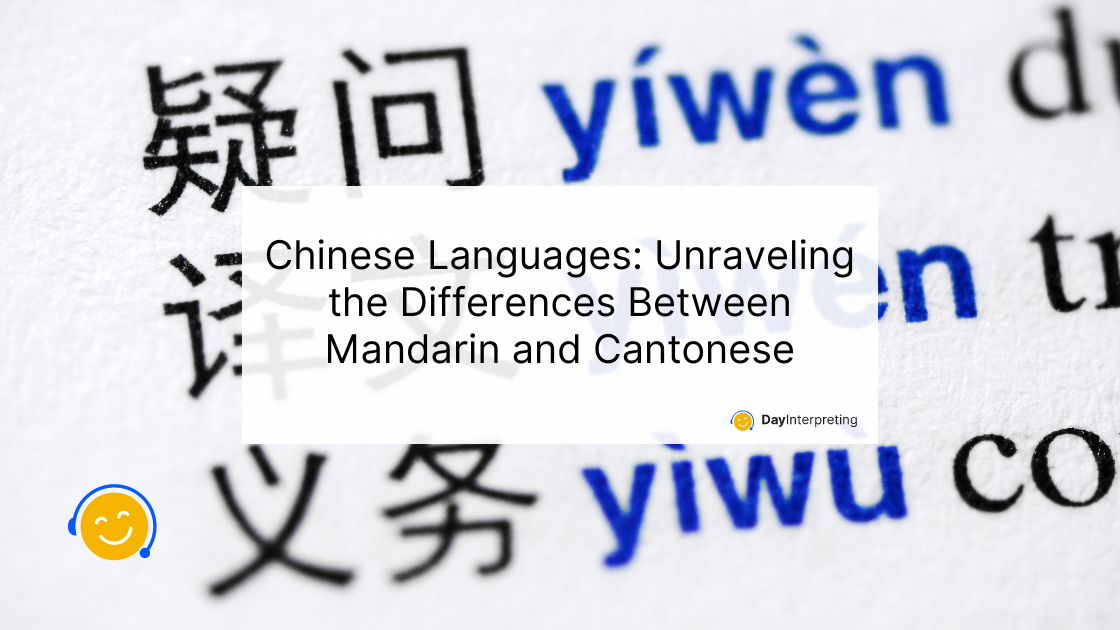Ever wondered about the fascinating world of Chinese languages? Today, we’re diving deep into the distinctions between Mandarin and Cantonese, two of the most prominent Chinese languages. As an interpreting service provider, understanding these differences is key to bridging communication gaps and fostering seamless conversations. So, buckle up as we embark on a journey through the rich tapestry of Mandarin and Cantonese!
The Basics: Mandarin and Cantonese Origins
Let’s start at the beginning! Mandarin and Cantonese are both members of the Chinese language family, but they hail from different branches. Mandarin, also known as Putonghua, is the official language of China and is widely spoken in the northern regions. On the other hand, Cantonese, spoken in the southern regions, including Hong Kong and Macau, has a rich history rooted in the Guangzhou area.
Tonal Tidbits: The Musicality of Chinese Languages
One of the coolest aspects of Mandarin and Cantonese is their tonal nature. Mandarin has four tones, each with a distinctive pitch, creating a musical quality to the language. Cantonese, being the diva of the Chinese languages, boasts an impressive nine tones! Imagine speaking with different pitches to convey different meanings – it’s like a linguistic dance party!
Character Chaos: Simplified vs. Traditional Characters
In the world of Chinese characters, Mandarin and Cantonese also do a little dance. Mandarin primarily uses simplified characters, which are streamlined versions of their traditional counterparts. However, Cantonese speakers often stick to traditional characters, adding an extra layer of complexity to their written language. It’s like reading a captivating story with two different sets of fonts!
Phonetic Puzzles: Pronunciation and Sounds
Let’s talk about pronunciation – the heartbeat of any language. Mandarin and Cantonese differ in their pronunciation of certain sounds. For instance, the “sh” sound in Mandarin is often pronounced as “s” in Cantonese. It’s like having a secret language within a language – a linguistic code waiting to be cracked!
Navigating the Language Maze: Mutual Intelligibility
Here’s an interesting twist – despite their differences, Mandarin and Cantonese speakers can often understand each other when speaking slowly and deliberately. It’s like two friends speaking slightly different dialects of English – a bit challenging, but communication prevails.
Pop Culture Influence: Mandarin in the Spotlight
In the entertainment world, Mandarin often takes center stage. Many Chinese movies, TV shows, and songs are in Mandarin, contributing to its global recognition. However, Cantonese shines in the world of Cantonese opera and Hong Kong cinema, creating its unique cultural footprint.
Choose Your Adventure: Learning Mandarin or Cantonese
For language enthusiasts looking to embark on a Chinese language adventure, choosing between Mandarin and Cantonese is like picking your favorite flavor of ice cream. Mandarin might be the vanilla – widely available and versatile. Cantonese, on the other hand, is like trying a unique and exotic flavor, offering a different cultural experience.
Final Thoughts
And there you have it – the whirlwind tour of Mandarin and Cantonese! As an interpreting service provider, understanding the nuances of these languages opens doors to effective communication and cultural exchange. So, whether you’re exploring the bustling streets of Beijing or navigating the vibrant markets of Hong Kong, knowing the differences between Mandarin and Cantonese will undoubtedly enrich your language journey.





0 Comments